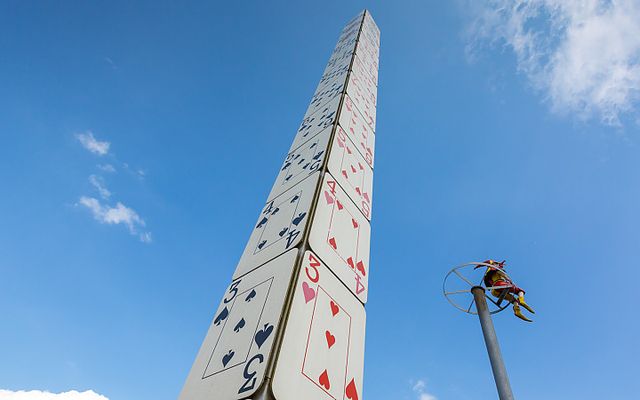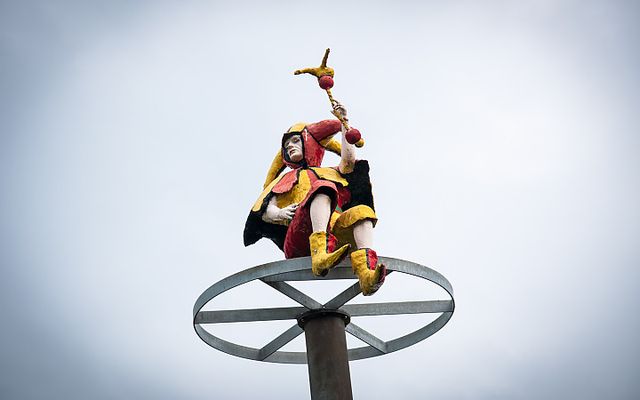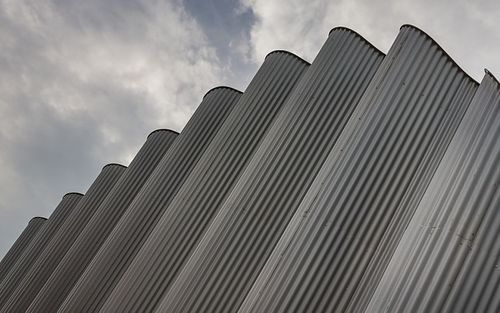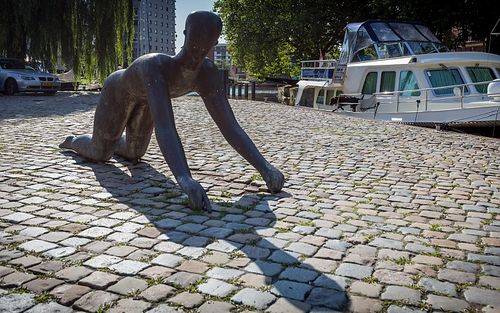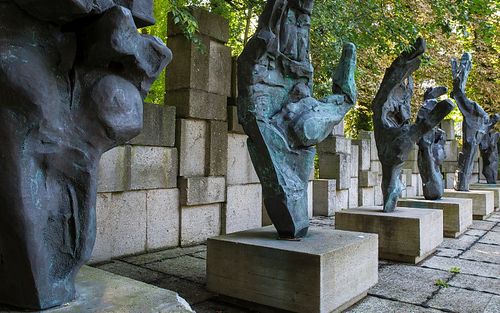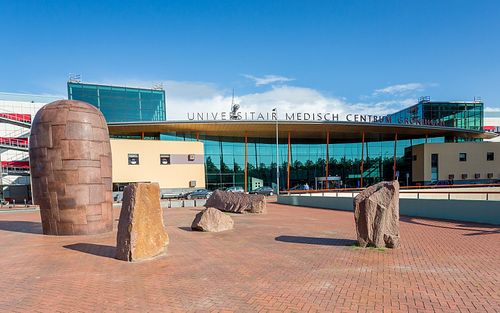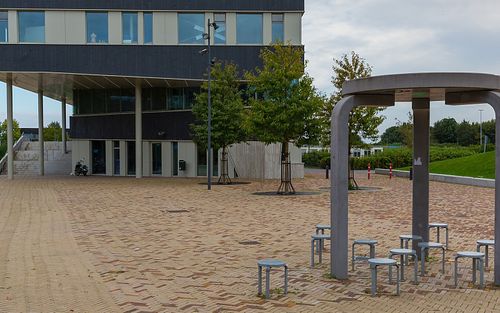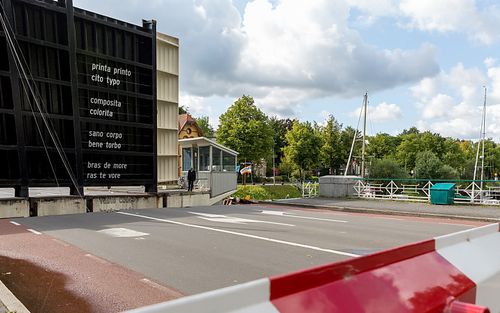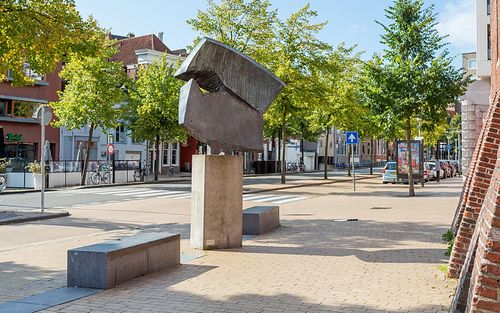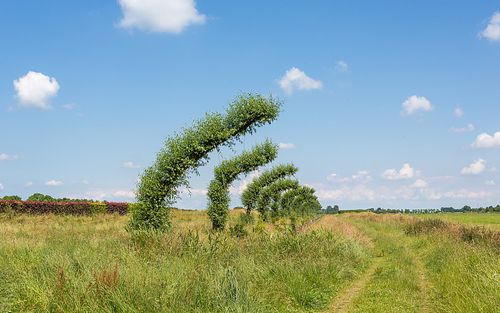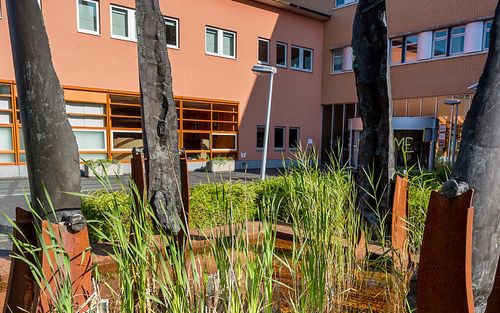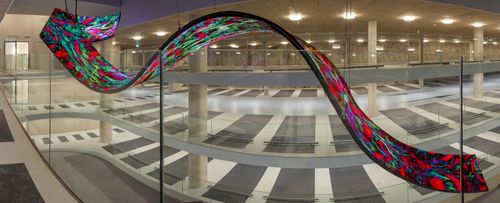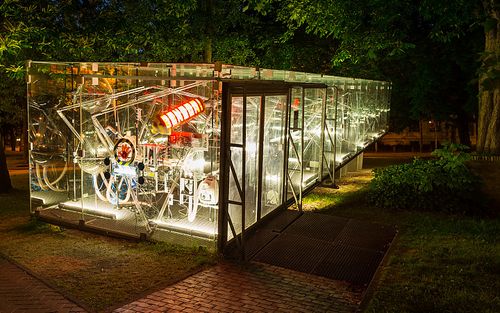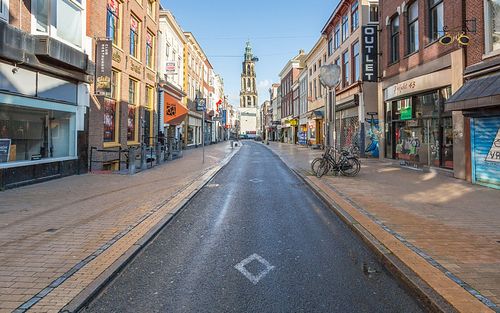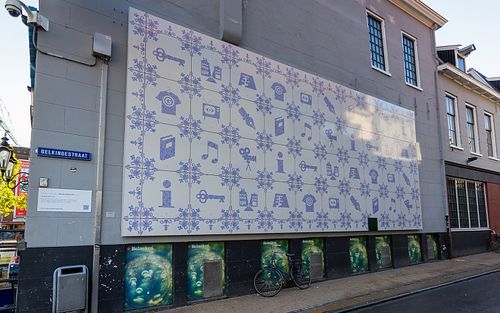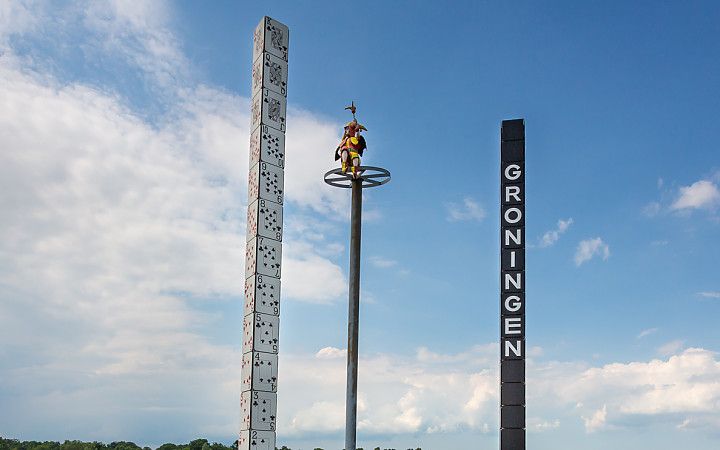
City marking S08/ The Tower of Cards, The Tower of Letters, The Joker's Perch
Take a look
In 1990 the city of Groningen celebrated its 950 th anniversary and a contemporary city gate was placed at each main entrance road of the city to mark this. Architect Daniel Libeskind developed these city gates. The S08 city marking is located at the Euvelgunnerweg by the A7 and consists of three towers: a tower of cards, a tower of letters and the joker’s perch. The towers, which were created by artist John Hejduk, symbolise time that tells stories. The four series of thirteen maps represent the 52 weeks of the year and the card game and joker refer to the Middle Ages, when games of chance were very popular. They also refer to the 950 th anniversary of Groningen in 1990, the black tower representing the connection with the present.

